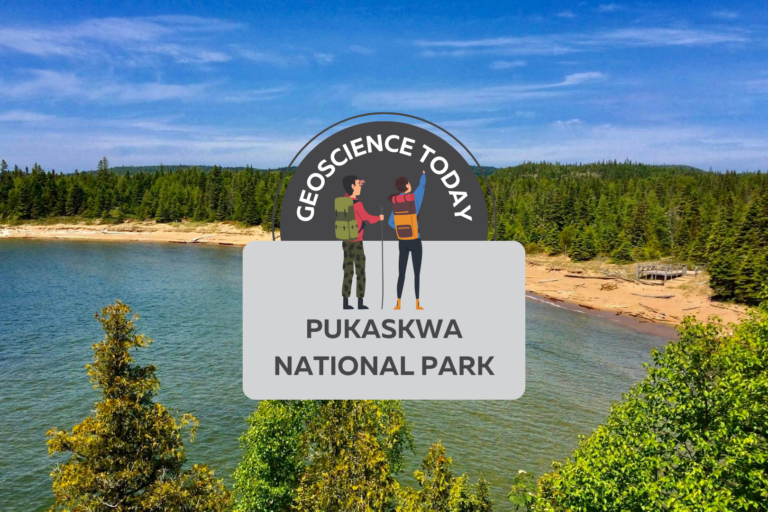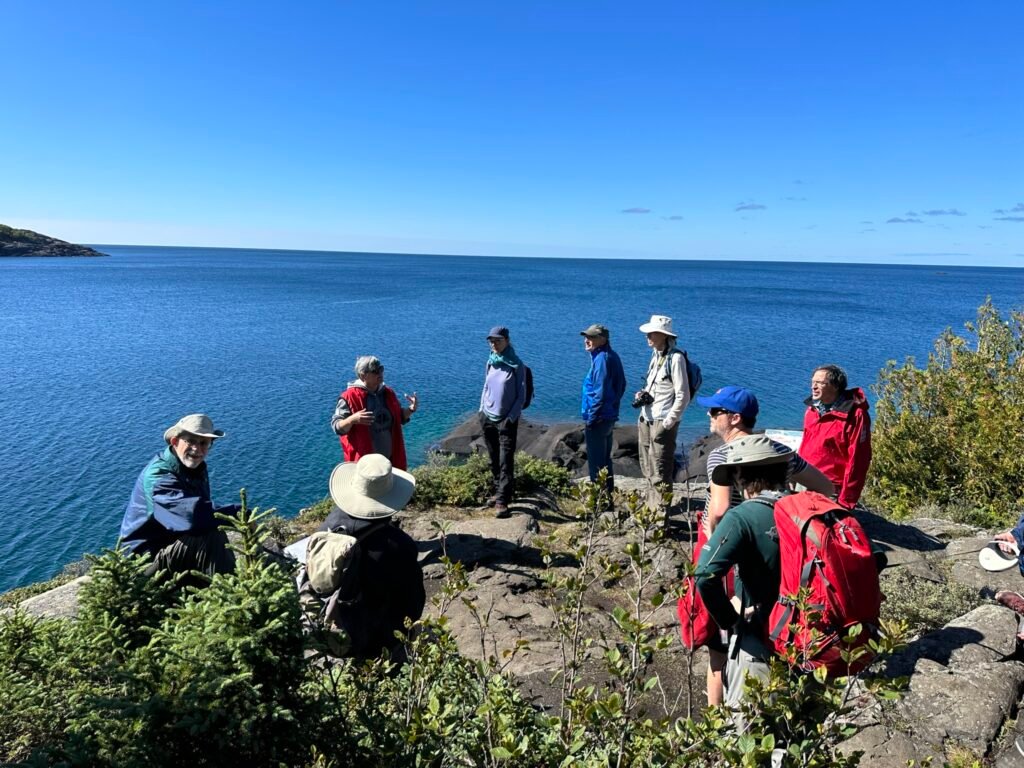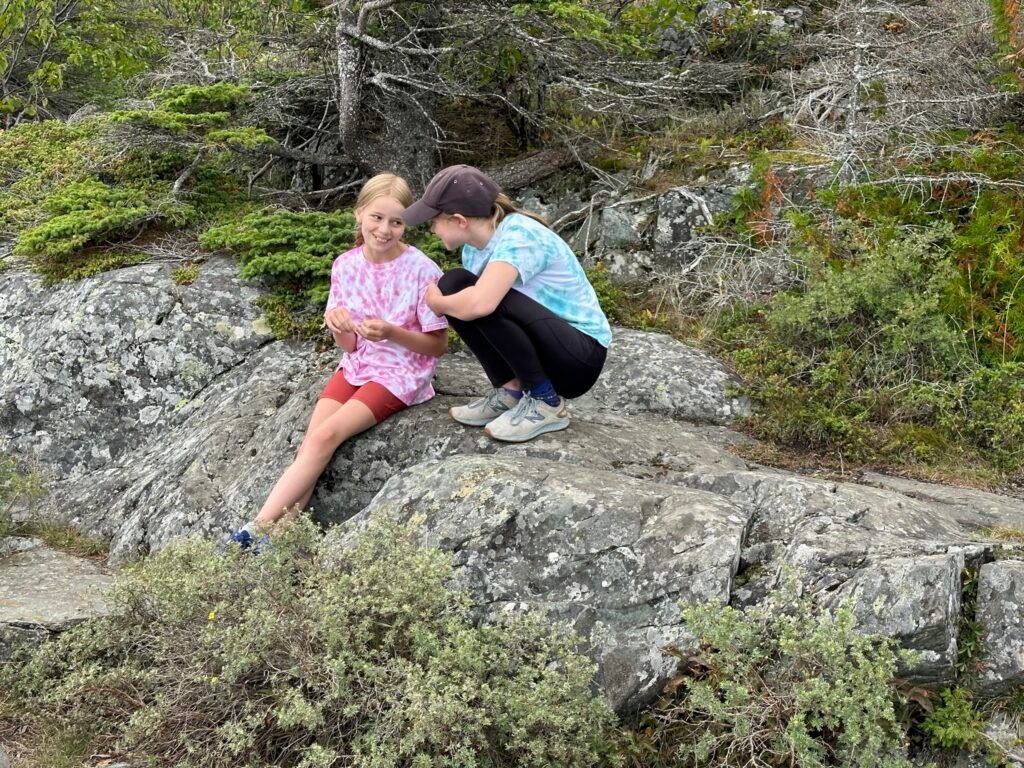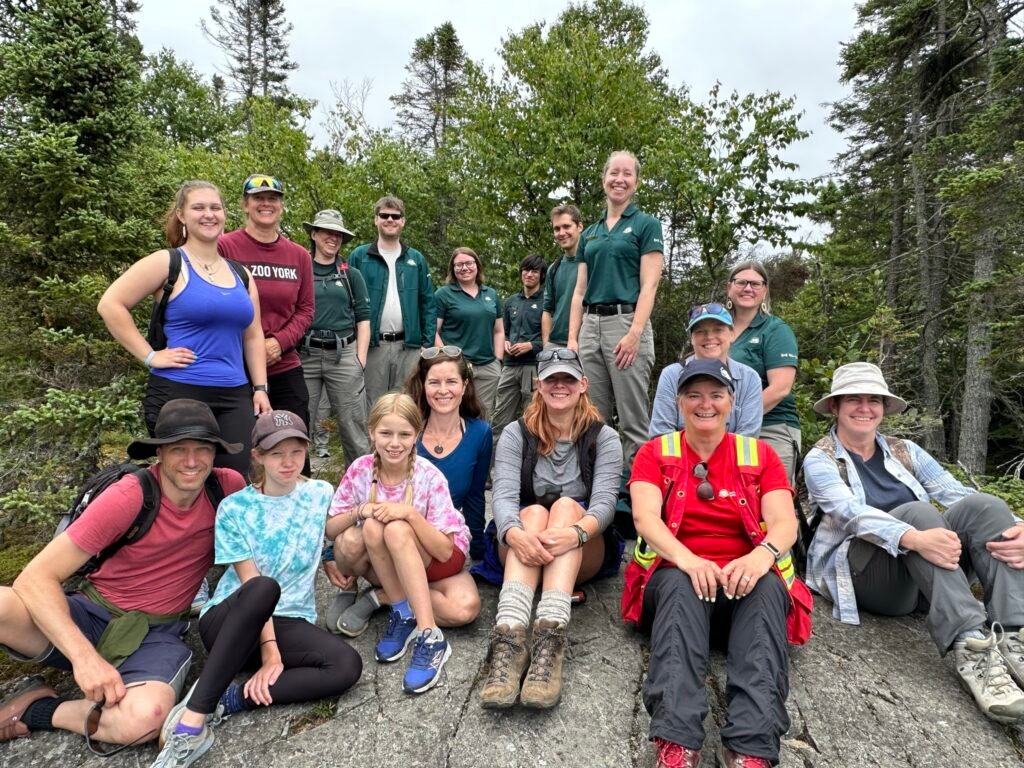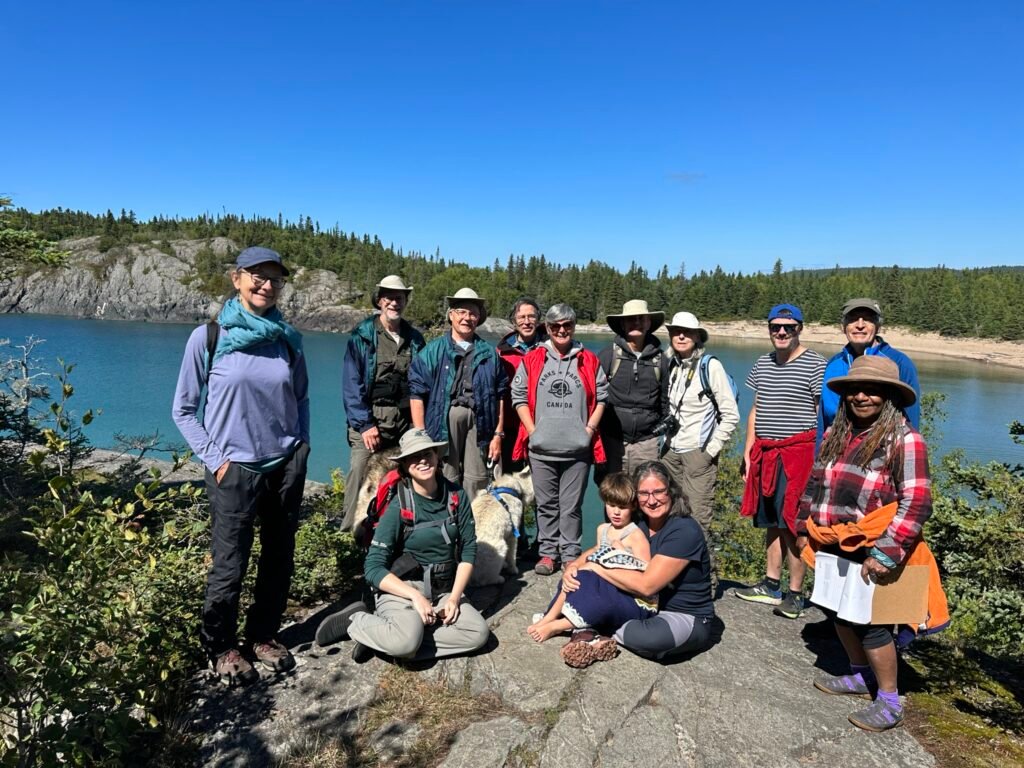Joanna Hodge, PhD, P.Geo
The Geologist in Residence is sponsored by the APGO Education Foundation
“Why did you come to Pukaskwa? And what is it that you love about this park?” These were a couple of the questions I asked visitors who participated in two interpretive hikes I guided at Pukaskwa National Park during my two-week stay at the park as the 2023 Geologist in Residence. The answers varied – paddling the lake, boating, hiking the front- and back-country trails, fishing, scuba diving, swimming at one of the three sandy beaches – but all were about spending time in nature and experiencing the wild beauty of Lake Superior. No one specifically mentioned the geology, but what many people don’t realize is that the park’s ecosystems – the rugged topography, the plants and animals, the crystal-clear lake, and the white sand beaches – are a function of the bedrock, and the park we experience today was 2.7 billion years in the making.
In August 2023 I had the pleasure and the privilege of being the Geologist in Residence at Pukaskwa National Park, near Marathon, Ontario, on the pristine shores of Lake Superior. The program, which is a joint initiative between the Canadian Federation of Earth Sciences and Parks Canada, aims to increase public awareness and appreciation of geoscience and the park’s geological features and landscape, and provide opportunities for staff and visitors to engage in geoscience education at the park. My goal was to connect staff and visitors to the geology of the park by meeting them at the intersection of geoscience and their diverse backgrounds, experiences, and interests. In collaboration with Pukaskwa Interpretation Officer/Coordinator Carly Robillard, we offered guided hikes of the Southern Headland Trail and campsite drop-in sessions for visitors to bring their geoscience questions.
Locations on the guided hike were chosen for their rock formations, where participants could view rocks specifically related to the geological events that formed the park, but also for ways in which they could highlight connections between ecosystems and the geologic processes and landforms. For example, visitors could see how different rock types allowed different types of plants to grow, and how deep chasms in the bedrock, formed when different rocks weathered at different rates, permitted the development of micro-ecosystems. They could see areas where glacial processes had scoured the rock and make connections between the rock types and water clarity. We discussed how Lake Superior formed through the combination of the ancient Canadian shield breaking apart over a billion years ago and glacial erosion less than 2 million years ago.
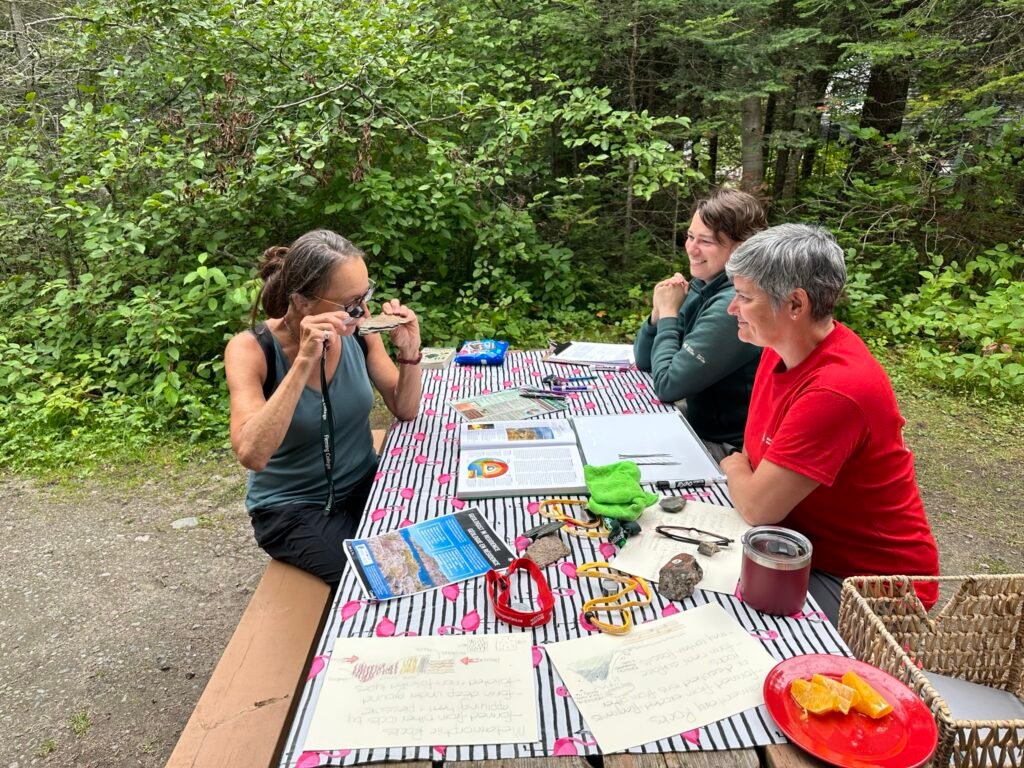
The drop-in sessions provided an opportunity for visitors and locals to ask questions about the geology of the park or geoscience in general. The reasons for attending the drop-in session included:
- Having unknown samples identified
- Sharing the cultural significance of rocks to Anishnaabe culture
- How glaciation impacted lake levels
- How the rocks of the park compared to Sleeping Giant and where they fit in to the general geology of the Canadian Shield
- What rocks could be expected on the coast from Pukaskwa to Wawa (this from a keen group of kayakers about to embark on a ten-day paddling trip).
- To eat Oreo cookies during a demonstration of plate tectonics.
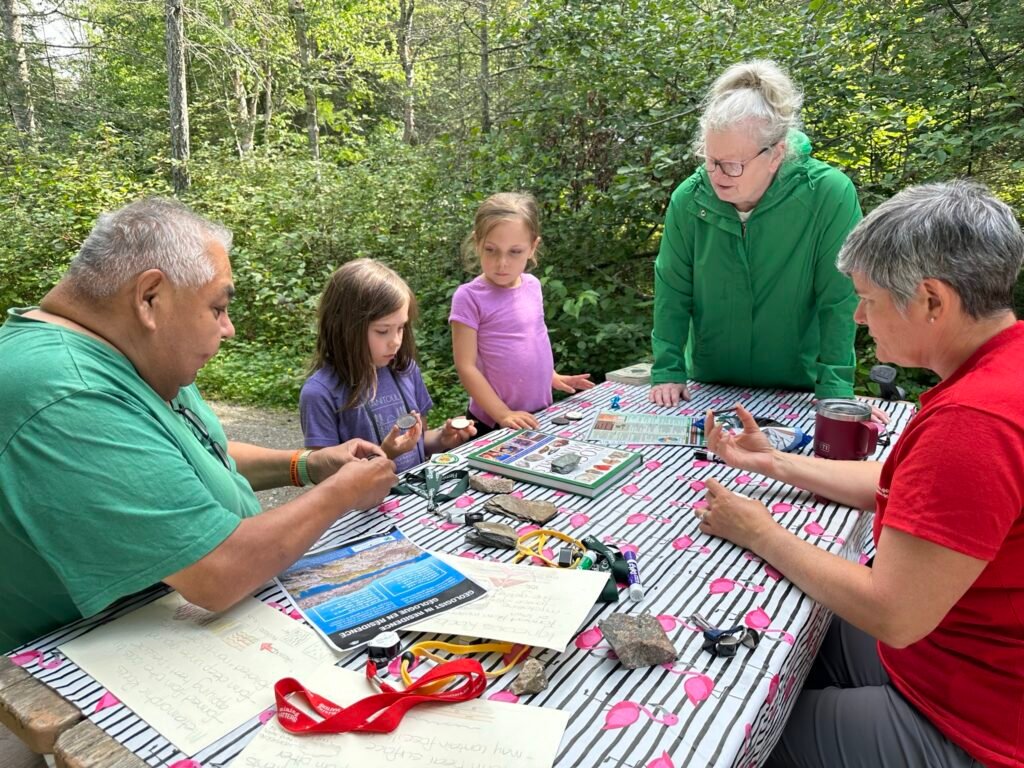
Staff and visitor engagement during all the educational sessions was extremely high. People were enthusiastic and interested about geoscience, which as an educator is very rewarding. For me personally, I enjoyed sharing my love and passion for geoscience with both visitors and Parks Canada staff and learn more about the geology of Pukaskwa, and to provide more knowledge to the park’s interpreters to speak to the geological evolution of the park once my volunteer period was completed.
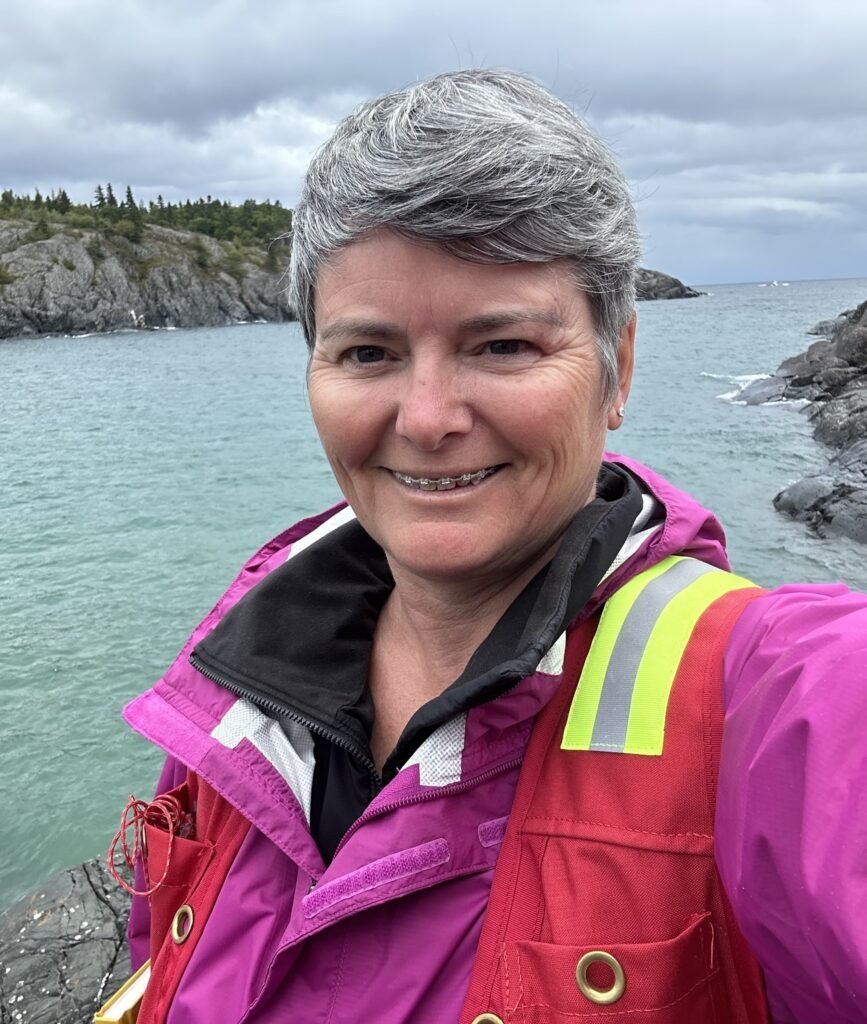
Joanna Hodge is a geology professor at Fleming College. She grew up in the shadow of Taranaki Maunga, an active volcano on the west coast of New Zealand’s North Island, which inspired her love for geology and pursuit of a career as a geoscientist. Joanna has worked in mineral exploration in New Zealand, Australia, British Columbia and Yukon, and is currently a geoscience educator and program coordinator of the Geological Technician program at Fleming College. She once travelled to Antarctica to see both rocks and penguins. Joanna believes that geoscientists are pivotal in helping solve pressing social and economic challenges, including climate change, access to clean water, and climate resiliency. She valued the opportunity to engage visitors in the science of rocks and how they connect to ecosystems and broader society.

